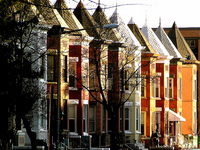Let’s write a better historic preservation law, part 2
In part 1, I laid out five principles for what’s important to preserve.
- Iconic structures: True “landmarks” based on the federal criteria.
- Architectural diversity: There’s truth to the argument that tastes change and it’s valuable to have a diversity of styles through preserving the most notable examples.
- Irreproducible craftsmanship: Buildings using materials or building techniques which are impossible or unusually expensive to reproduce.
- Neighborhood consistency: Maintaining the architectural unity of a neighborhood that possesses it.
- Functional urbanism: Entrances to the street, an open and welcoming facade, and ease of pedestrian access that contribute to the vibrancy of a district.
Next, here are some thoughts about what we should not preserve:
- Mediocre examples of architectural styles: Just because one building of a style is landmarked does not mean another ought to be simply on the basis of that criterion alone.
- Poor urbanism: Preservation should not stand in the way of making a building with a poor relationship to the street evolve into a more welcoming one. This doesn’t mean any blank wall building can simply be torn down, but that a change which disturbs the facade to improve the streetscape should be easier than one that does not improve it.
- Low density: Preservation is not zoning. A building can be taller than its neighbors and still fit in with a historic area. If a neighborhood wants to keep buildings low, zoning is the proper route. Preservationists should not be in the business of dictating heights.
Which factors would you add? Take away? Reword?

